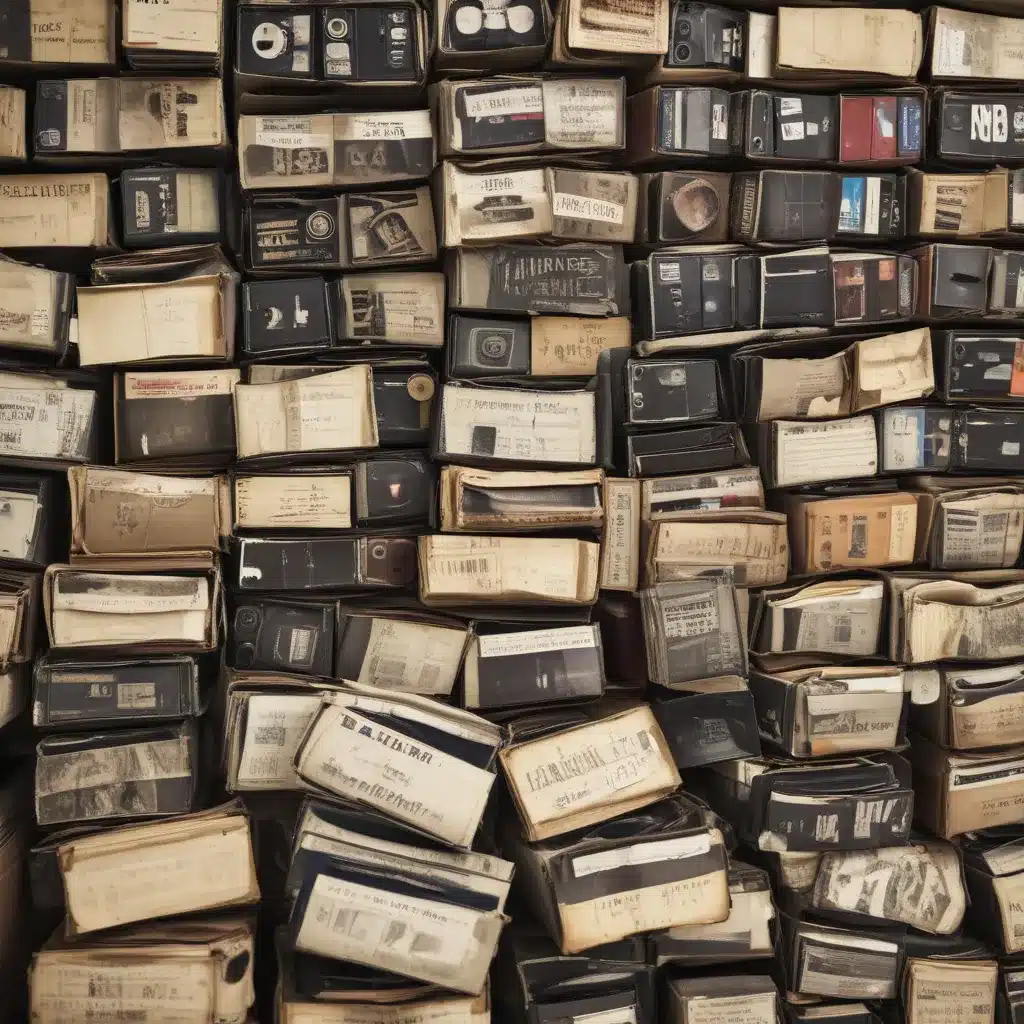As a computer repair technician in the UK, I’ve seen my fair share of old media formats coming through the doors. From ancient floppy disks to battered VHS tapes, these relics of the past hold a treasure trove of memories and information that simply can’t be replicated in the digital age. But with the steady march of technological progress, preserving these analog artifacts is becoming an increasingly important – and challenging – task.
The Enduring Allure of Physical Media
In our digital-first world, it’s easy to forget the unique charm and resilience of physical media. Unlike the ephemeral nature of cloud storage or even modern hard drives, the humble CD-ROM or DVD-ROM is a veritable fortress against the ravages of time and technology. As one Redditor so eloquently put it, “CD’s and DVD’s physically burn the 1’s and 0’s with a laser and are virtually impervious to magnetic fields, physical impact like dropping, etc.” [1] This means that, with proper care and storage, these discs can maintain their data integrity for decades – a far cry from the constant churn of software updates and hardware obsolescence that plagues our digital lives.
The Risks of Overlooking Old Media
But the passage of time is a cruel mistress, and even the most well-preserved physical media can succumb to the elements. As I’ve seen in my line of work, cracked cases, faded labels, and scratched surfaces can all spell doom for our cherished analog archives. And let’s not forget the sheer volume of data that these old formats can contain – a single VHS tape might hold hours of irreplaceable family footage, while a box of floppy disks could harbor the only existing copies of critical business documents or long-forgotten creative projects.
Developing a Preservation Strategy
Faced with this daunting challenge, it’s clear that a robust archiving strategy is essential for safeguarding our analog heritage. The first step is to take stock of what we have – comb through attics, basements, and storage units to unearth those forgotten relics, then assess their condition and importance. From there, it’s time to get proactive.
Digitizing and Backing Up
One of the most effective ways to preserve old media is to digitize it. Using specialized hardware like tape drives, disc readers, and even vintage computer emulators, we can transfer the analog data to modern digital formats. [2] This not only ensures the information’s longevity but also opens up new possibilities for accessing and sharing it.
But digitization is only half the battle – we also need to implement robust backup strategies. As the Redditor mentioned, “it’s best to keep ROM discs in a dry, cool environment for maximum shelf life” [1], but even then, redundancy is key. Consider storing multiple copies in different locations, or even exploring cloud-based backup solutions for an extra layer of protection.
Handling with Care
Of course, before we even think about digitizing or backing up, we need to ensure our analog artifacts are properly cared for. This means handling them with the utmost care, using clean, lint-free gloves to avoid oils and dirt, and storing them in archival-quality sleeves or cases. [3] It’s also crucial to monitor temperature and humidity levels, as fluctuations can wreak havoc on delicate magnetic tapes and optical discs.
Embracing the Analog Revival
As we work to preserve the past, it’s important to remember that there’s still a vibrant community of analog enthusiasts out there. Platforms like Plex are making it easier than ever to curate and share our vintage media collections, while companies like LegacyBox are offering professional digitization services to help bridge the analog-digital divide. [4][5][8]
So let’s not think of this as a purely nostalgic endeavor – by preserving our analog heritage, we’re not just safeguarding the past, but also cultivating a rich, diverse digital future. Who knows, maybe one day your grandkids will be marveling at your collection of floppy disks, just as you once did with your parents’ VHS tapes.
Conclusion: A Call to Action
The task of preserving our analog archives may seem daunting, but with a little care and foresight, it’s a challenge we can overcome. By digitizing our old media, implementing robust backup strategies, and embracing the analog revival, we can ensure that our cherished memories and irreplaceable data live on for generations to come.
So what are you waiting for? Dust off those boxes in the attic, fire up the old tape deck, and let’s get to work on safeguarding the past. The future is counting on us.
[1] https://www.reddit.com/r/YouShouldKnow/comments/zhueho/ysk_if_you_want_to_store_any_kind_of_digital/
[2] https://forums.veeam.com/tape-f29/veeam-doesn-t-use-existing-media-set-t48939.html
[3] https://www.reddit.com/r/PleX/comments/nlmz7q/archiving_old_tv_shows_but_keeping_them_in_the/
[4] https://www.petemarovichimages.com/never-use-a-raid-as-your-backup-system/
[5] https://pastpresentpix.com/
[6] https://www.usgs.gov/programs/national-geospatial-program/historical-topographic-maps-preserving-past
[7] https://www.ala.org/alcts/preservationweek/howto/digital-preservation-tips
[8] https://legacybox.com/













